Store: Kasimov, Industrialnaya str., 1A
Press about us
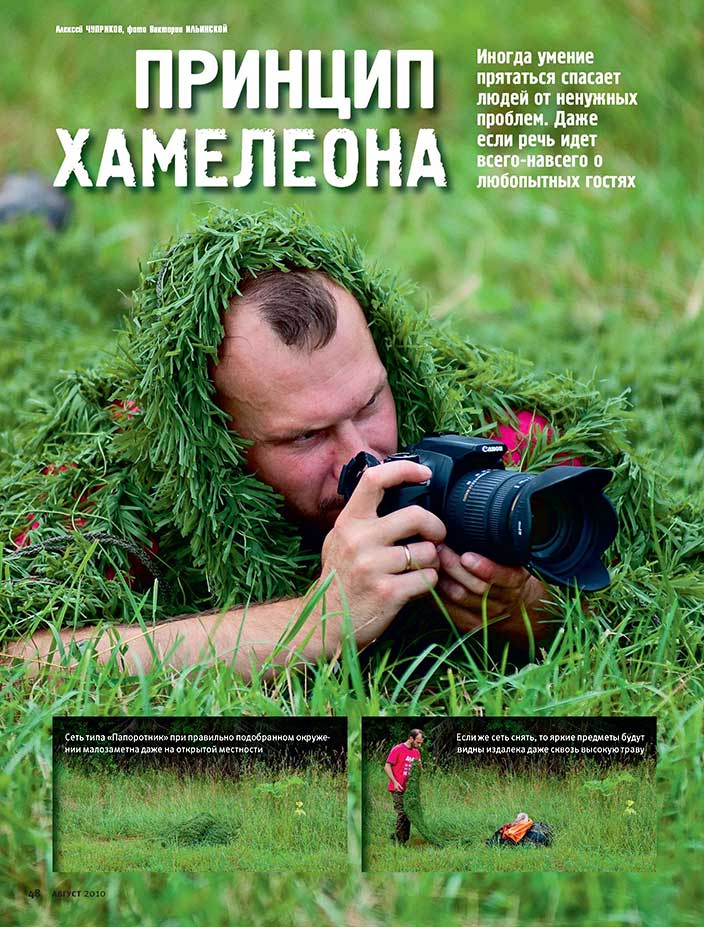
Chameleon principle
Not only hunters and soldiers need to be unnoticeable in the nature. Normal travelers sometimes also have that need. Especially when it comes to spending nights near highways or in unfamiliar villages. Who knows what kinds of people may want to pop in, and a reasonable person shall always leave the choice of company to themselves. And camouflage will help him in this matter. But only if you use it correctly.
The evolution of stealth
Mass camouflage as a trend in uniforms and equipment only appeared at the end of the 19th century during the Boer War. It was then that the English replaced their bright uniforms with a monochrome marsh colour, which was called khaki and is now associated with military.
Since then, camouflage has changed dramatically, and it has become popular not only amongst the military and nature lovers. The military style has also infiltrated purely civilian life.
There are principles and ways to become almost invisible for different situations, for every type of area. We will focus on how to disguise yourselves and your camp from another person.
Color harmony
The planning of the disguise shall begin at home. The first thing you need to do is to understand where exactly you need to hide, in what vegetation, in which prevailing colors and even on what terrain
In general, there are two fundamentally different ways of camouflaging:
- "Blurring" the silhouettes of people and objects, making them unrecognisable and therefore imperceptible.
- Breaking a figure into a multitude of small, colorful spots, which confuse the eye so that it cannot perceive the original contours.
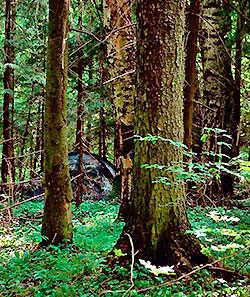
Both can be applied either to one person or to a whole camp.
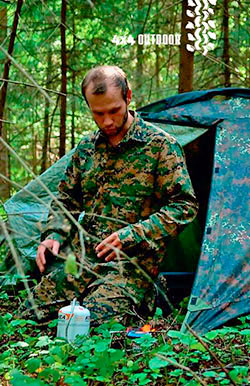
For example, a tent, even from camouflaged fabric, can be seen from afar due to its clear contour. And if you curtain it with a camouflage netting, avoiding straight lines, the tent shall become invisible even from a short distance. It is clear that there is no universal recipe, but nevertheless consider that even a well-selected camouflage becomes invisible from a distance of at least 50-100 meters, and only if there is a fairly dense underbush between the object and the observer. And if there is no undergrowth, the contours of objects can be seen even from 300 metres during the day.
German camouflage Flecktarn, which has a history dating back to the 1930s, is considered the most suitable for the central part of our country. It is natural, seeing as it was designed for it. The small spots of 3-6 colors blend perfectly into our forests.
Disguise is not just about coloration. If you replace a fire with a burner and don't make any noise, your chances to go unnoticed shall increase.
Think about yourself
But what good is disguise if people are dressed in bright clothes visible from afar? Even a neutral gray does not always blend into the general background. Clothing has to be baggy, with lots of spots of different shades to match the basic tones of the environment.
If you really don't want to attract attention, then in addition to visual disguise, don't forget that people still have hearing and sense of smell. So give up the fire in favour of the burner and don't make any noise.
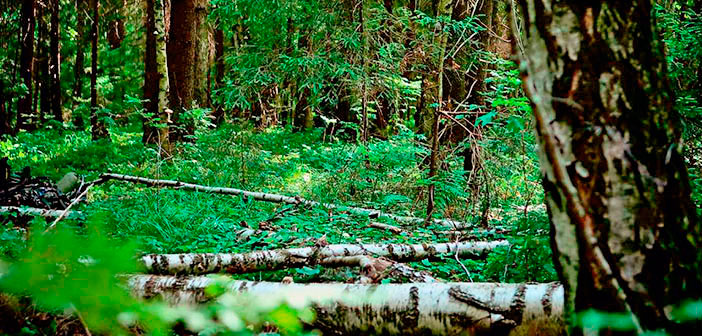
Nasty trick
There is a widespread belief among the general public that camouflaged coloring of familiar things shall help to vanish in nature. Manufacturers are happy to promote it. Tents, sleeping bags, mats, furniture and other items of equipment, not to mention clothes, are produced in camouflage coloring. Do you often sleep in a sleeping bag outside? Or, say, how discreet will a chair with camouflaged fabric but shiny aluminum legs be? Frankly, it’s all rubbish. It makes sense to disguise the tent and the awnings: one for the car, the other for the people.
Camouflaged objects and disguised parking spots are good and well until you are five hundred meters away from such a camp. I can assure you that a person who does not have serious forest orientation skills can spend a very long time looking for his tent made of camouflaged fabric even in the light of day. And at dusk and especially at night the effectiveness of such searches is close to zero. It is not for nothing that all reputable manufacturers of tourist equipment make ridgepoles reflective, and the equipment itself is painted with bright colors..
A camouflaged awning is able to hide the car and the camp from anyone else's view. The main thing is that there must be vegetation between it and the observer: the clear contours of the tent in an open terrain can be seen from afar.
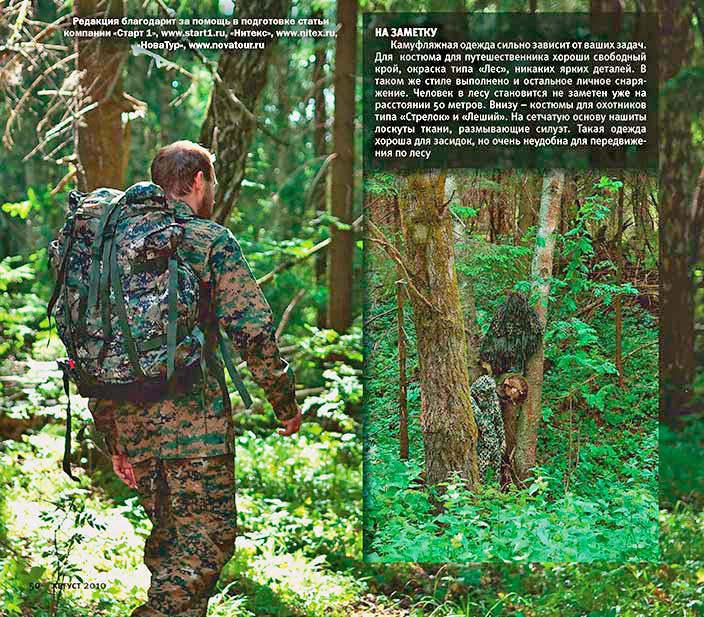
Into the nets
The masking net is the most practical solution to hide your camp from curious eyes. The nets are available in different colors to suit almost all types of vegetation and any season. For example, for coniferous forests, a "furry" netting such as brown (for dry conifers) or green (for fresh conifers) "Fern” nets will be suitable; for deciduous forests, a netting with a fixed camouflage material cut into irregular stripes will be appropriate. White material will hide your property in winter. There is also an option where fabric stripes of different colors are woven into the net. Due to their large number of gaps, they only work over long distances and are particularly suitable for military purposes. The advantage of the nets over awnings is that there are gaps in the material. This means that the winding is low and the wind will not blow away the disguise. The net can therefore be not stretched but simply hung up on branches or spread out on the ground. However, it can be fastened with plastic clamps in convenient places for reliability. But installing the net itself is a torturous activity, especially in a forest, among the many branches. As experience shows, even cars have many protrusions that get caught by the netting holes. But after correct installation the result can surprise you. During the shoot, the photographer could not see the net from the distance of 50 metres. The only thing to consider here is that bright objects are still visible the holes in the fabric. It is therefore better to unfold the net precisely, avoiding tensioning the material, so that the folds of the fabric could cover the holes.
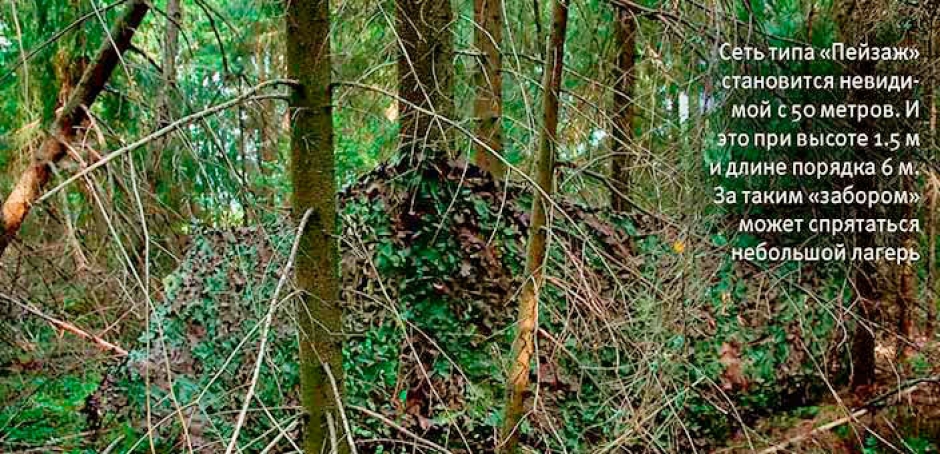
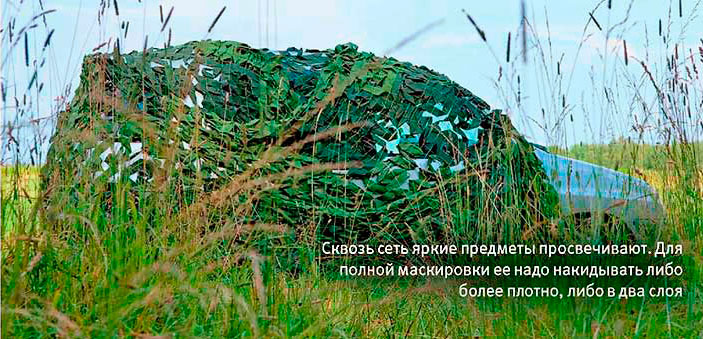
Roll out the lawn
The nets are sold both in standard sizes and in rolls by the meter. The dimensions of finished products range from 1.5 to 6 m in length and/or width. A 1.5x3 m piece is enough to cover a person on one side. A section of approximately 6x8 m will be required to disguise a medium sized off-road vehicle, and in order to hide a couple of tents and a vehicle from all sides, it will be necessary to cover the perimeter of the camp with a net of at least 2.5x30 m. Large netting can be made from standard size nets by connecting them with ropes or clamps, or it can be cut out as needed: nets can be easily cut anywhere and not unravel.
Nitex would like to thank the 4x4 Club car magazine for the article.


